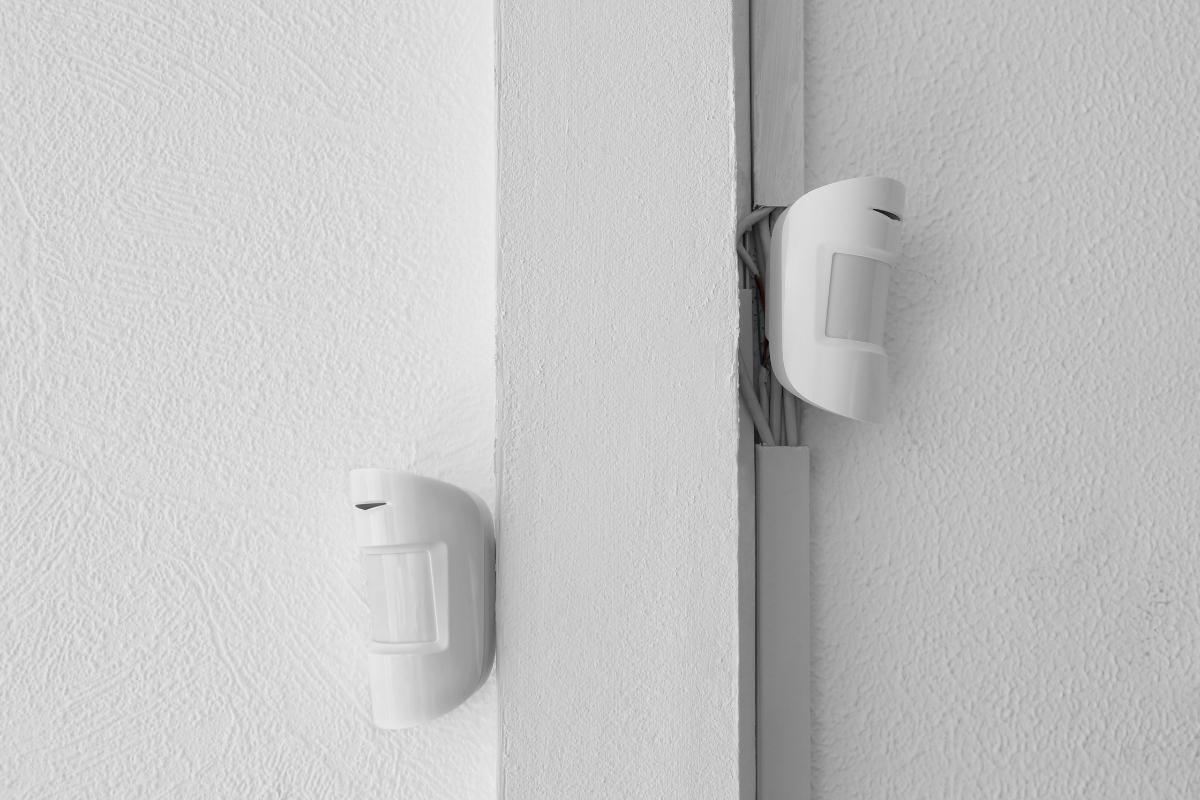Motion sensors play an important role in energy-saving, automatic control and security system applications. Motion sensors can control lighting, trigger security cameras and alarms when the sensor detects people or moving objects.
Motion sensors, detectors, lights, switches, security cameras and alarms are widely used in energy-saving areas, home safety and commercial buildings. We’ll cover what motion sensors are, how they work, their major applications to help you choose the best motion sensor products that meet your specific demands.
What is a Motion Sensor?
A motion sensor is an electronic device that can detect and measure the movement of objects or people. When a motion sensor detects a moving object or people, it will send a control signal to trigger the connected lights or alarms, then lights turn on and the security alarm is triggered.
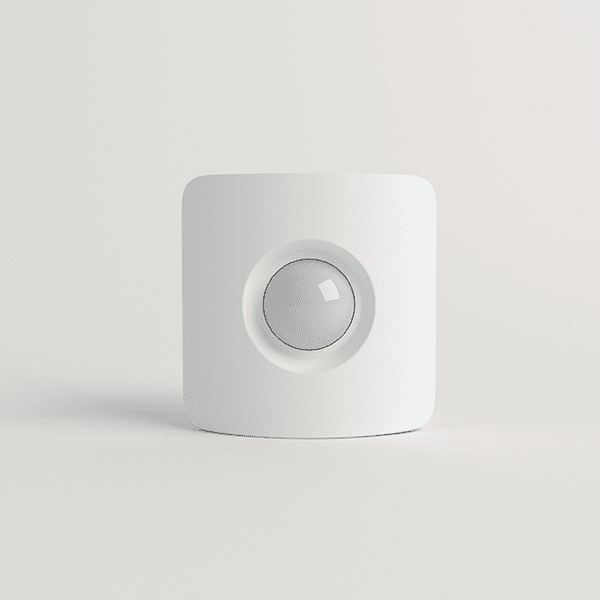
In most cases, motion sensors are integrated into end products already, such as motion sensor light, motion sensor security camera and motion sensor light switch.
If your existing lights or cameras do not have a built-in motion sensor, you can add a standalone motion detector to control them. Standalone motion sensors or motion detectors can be hardwired to your lights and cameras or connected by Wifi smart ecosystem.
How Does Motion Sensor Work?
Generally, there are several technologies used in motion sensors for detecting people or movement of objects: PIR, ultrasonic and dual-technology.
Each technology has its advantages and disadvantage in detection accuracy, energy consumption, reliability and costs.
PIR Motion Sensor
A passive infrared motion sensor, also known as a PIR motion sensor, detects motion and people by measuring the differences in heat changes received on the infrared sensor.
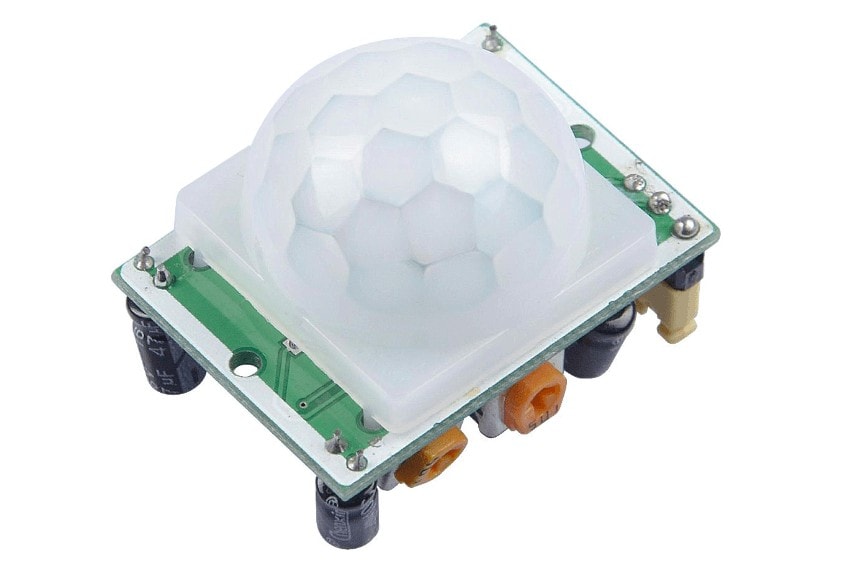
PIR motion sensors have a thin layer of pyroelectric material and two slots made of materials that are sensitive to infrared. When the detection area is empty without people, both two slots will detect the same amount of infrared emitted from the ambient environment. When a warm body, like a human or cat, passes by the sensor, the first slot will receive and detect a heat change first, meaning a body comes. When the body leaves the area, the second slot will notice a reverse heat change, meaning the body has left the room. For example, if a PIR sensor controls a light, the PIR sensor will turn on the light when a person comes and turn off the light when the person leaves.
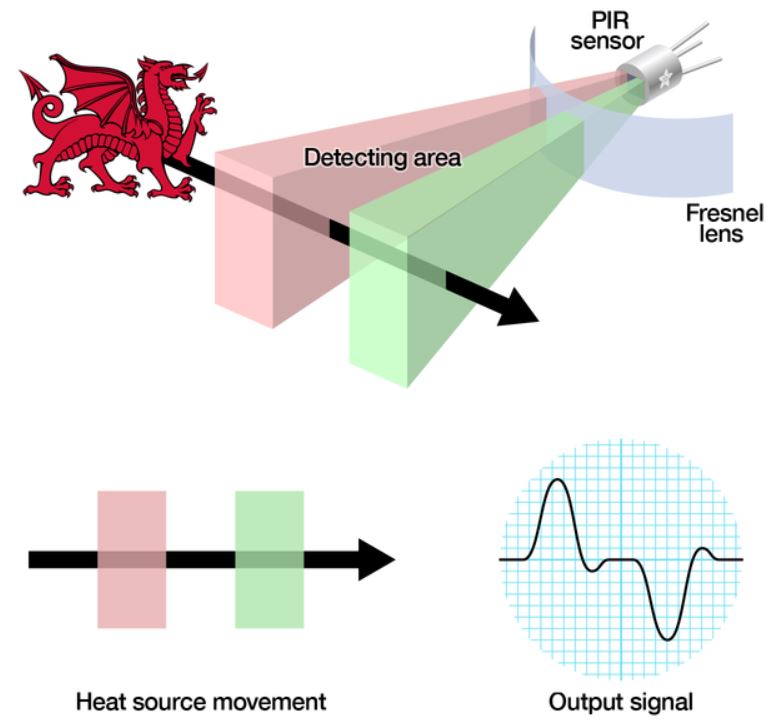
Because all creatures, not only humans, emit infrared radiation, animals may get detected and trigger the PIR sensor. To further increase the accuracy of the PIR technology to let the sensor only reacts to movement from people, we can narrow the heat-sensing range to near-human temperate ranges. Human bodies have a skin temperature of about 34 degrees, radiating infrared at a wavelength of 9 to 10 micrometers. Restricting a PIR motion sensor within a sensitivity of 8 to 12 micrometers can improve the accuracy significantly.
When using PIR motion sensors, make sure the sensors have a clear sight of view of the detecting area. In simple words, the sensor needs to be able to “see” the place because obstacles like walls or stalls can block the infrared for the sensor to detect.
Another thing to notice is that the PIR motion sensor is one of the few sensors that only need to passively receive motion signals without the need to constantly send out signals to look for motion. So, PIR sensors are very durable, cost-effective and consume very little energy compared to other motion detecting technologies.
Ultrasonic Motion Sensor
Ultrasonic motion sensor detects motion by emitting high-frequency sound waves and measuring the differences from the signal that bounces back. When the detection area is empty, the ultrasonic sensor will detect the same frequency in the signal bounces back with the sound wave it sends out.
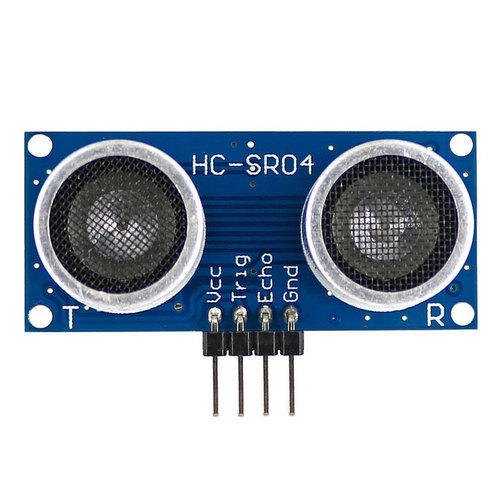
When there is a moving object in the room, the sensor will detect a difference in frequency from the reflected sound signals. The ultrasonic motion sensor can also determine the distance from the target by measuring the time it needs for the sound wave signal to bounce back.
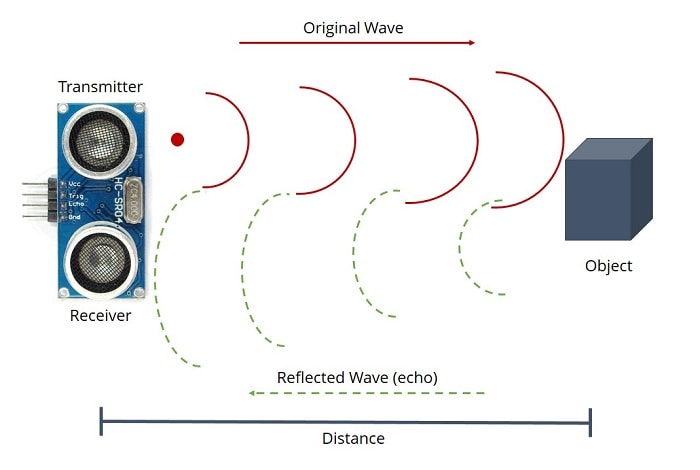
Unlike PIR sensors, ultrasonic motion sensors do not need to have a clear sight of view of the detection area because soundwaves can pass around obstacles and corners.
Dual-Tech Motion Sensor
A dual-tech motion sensor usually contains both a PIR and ultrasonic sensor and detects motion using both technologies at the same time. We know the PIR sensor consumes very little energy. In contrast, the ultrasonic sensor uses much more energy for sending out soundwave signals constantly, so the ultrasonic sensor is put on sleep mode and only gets activated if the PIR sensor has already detected a motion first to reduce power consumption. Then the ultrasonic sensor gets activated and double checks the motion.
The dual-tech motion sensor is only triggered when both PIR and ultrasonic sensors have confirmed the same motion. In this way, a dual-tech sensor can significantly reduce false-ONs caused by either a PIR sensor triggered by non-human heat changes or an ultrasonic sensor triggered by non-human moving objects.
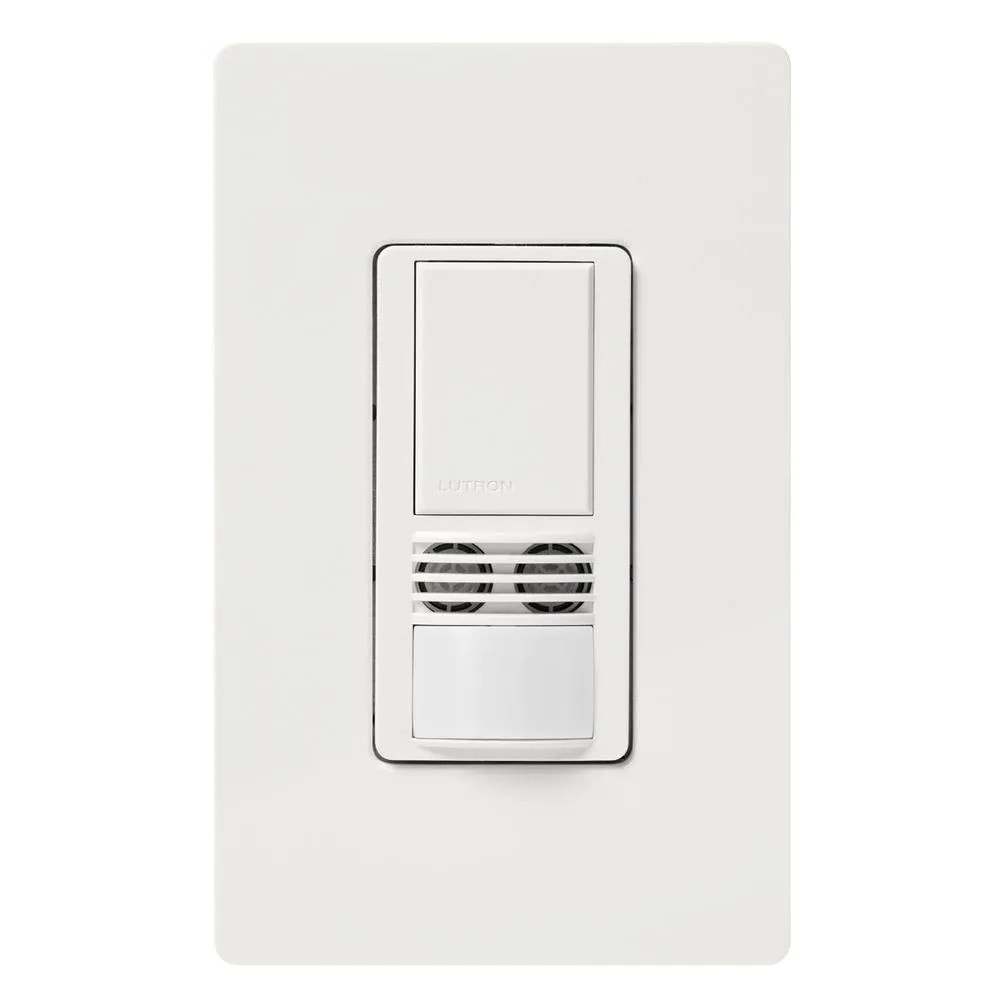
As long as either PIR or ultrasonic sensor is continuously detecting motion, the dual-tech sensor remains active. When neither sensor detects motion, the dual-tech sensor now confirms there is actually no motion and then turns off the light or security camera. In this way, a dual-tech motion sensor can effectively reduce false-OFFs, keep the accuracy at a super high level, and remain energy-efficient at the same time.
Dual-technology motion sensors, as both sensors are required to detect the motion simultaneously, skilled burglars can bypass either sensor technology without getting caught. For this reason, some people might use a PIR sensor and an ultrasonic sensor together instead of a dual-tech sensor for more accurate detection performance, especially in security systems.
Motion Sensor Type Pros and Cons
Now we are going to talk about the pros and cons of each technology in the following sections that matter most to the performance of motion detection.
Sensitivity Level
All PIR, ultrasonic and dual-tech motion sensors can be adjusted to low and high sensitivity according to your specific demand. If the motion sensor gets triggered too frequently, you can set the sensor’s sensitivity to low. If the sensor does not react to nearby motions, you can set the sensitivity to high.
PIR motion sensors are sensitive to large and lateral movement because of how they detect motion via the two slots. They are more sensitive to detecting people passing by the sensor rather than people walking towards it. PIR sensors are not quite competent in detecting small and fine motions, like turning pages or keyboard typing.
Ultrasonic and dual-tech motion sensors can detect very small motions, making them great for applications where a high level of sensitivity is required, such as security systems, automatic garage doors, open offices, and stairways.
Sensor Cost
PIR motion sensors are very inexpensive, durable, and only use very little power, which makes them the perfect choice for long-term applications, especially for daily home applications.
Ultrasonic and dual-tech motion sensors are way more expensive to buy than PIR motion sensors. Additionally, ultrasonic sensors are costly to run as well because they need to constantly send out ultrasonic signals for detecting motion that consumes a lot of electricity.
False Detection
Both PIR and ultrasonic motion sensors may trigger false detection if they are not properly installed and located. If you need a high-accuracy motion sensor, users should consider using a dual-tech motion sensor to lower the false detection and get the best result.
PIR sensors do not detect soundwaves, so they are suitable for places with high airflow and noise sounds, where ultrasonic sensors are not competent and may get falsely triggered by the airflow.
Ultrasonic motion sensors do not detect heat changes, so they are suitable to be installed near heat sources, where PIR motion sensors are not competent and may detect non-human temperature changes and trigger a false alarm.
Detection Coverage
PIR motion sensor is suitable for only detecting motion from a selective area. You can adjust the sensor’s view by partly covering it with adhesive tapes.
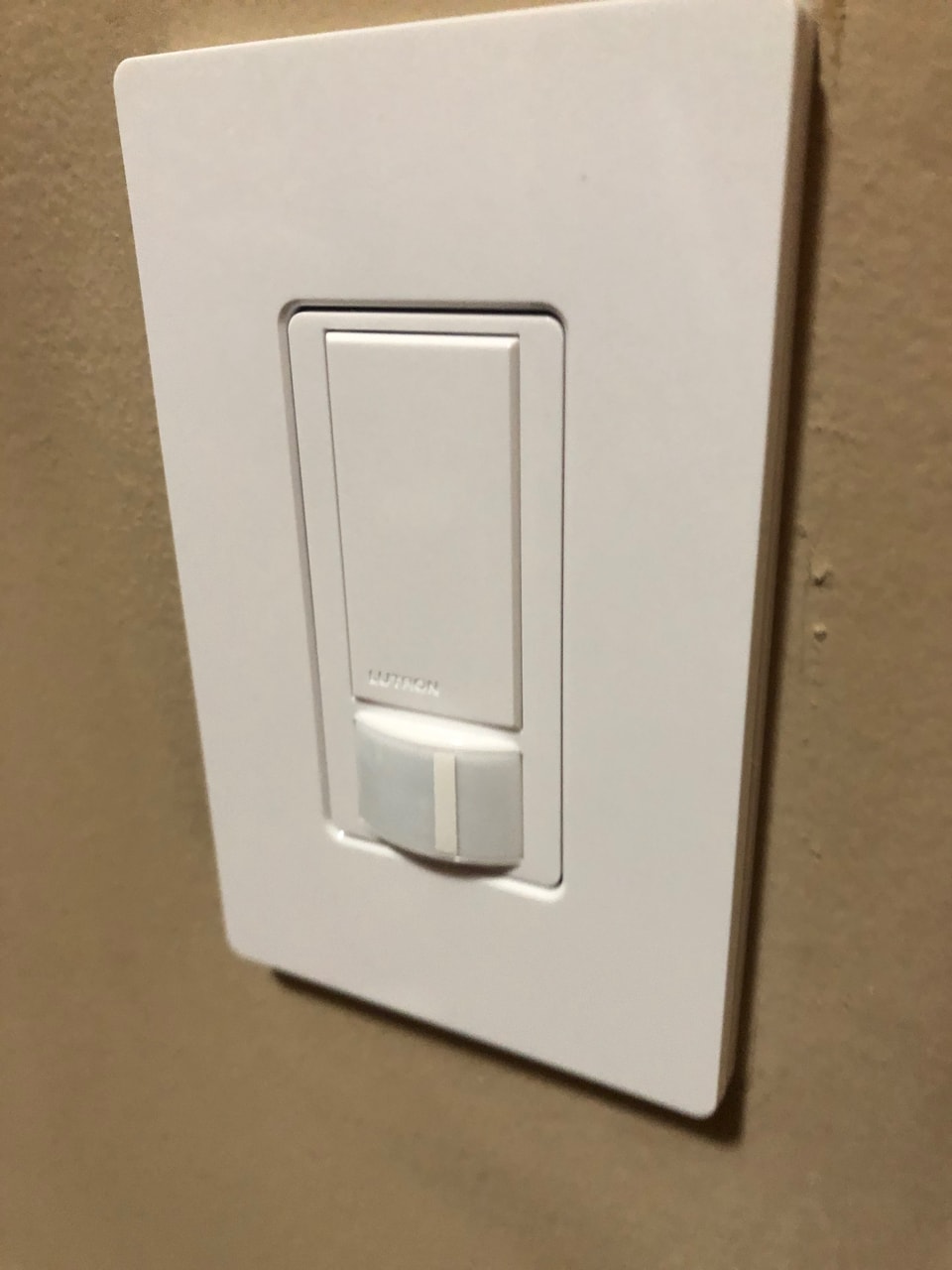
Also, the PIR sensor requires to “see” the infrared emitted from people, so there should not be many obstacles in the room that block the sensor’s sight.
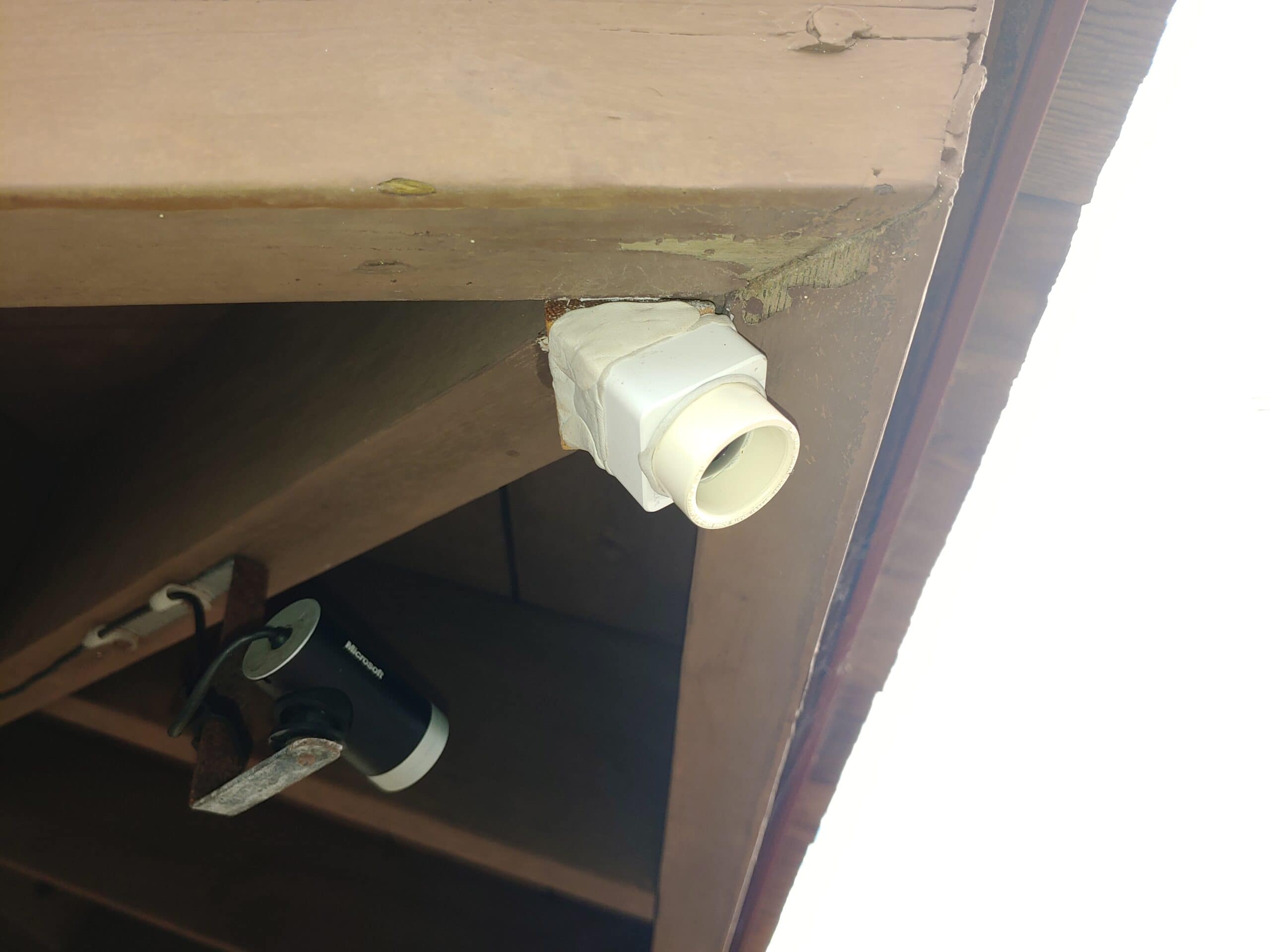
Ultrasonic sensors can detect past walls, stalls, obstacles and corners, so they are suitable for places with a limited sight of view.
Conclusion
Normally, PIR motion sensors are enough and competent for home and daily commercial usage. They detect mainly human activities and are not too sensitive to cause false alarms. What’s more, PIR sensors are durable and very cheap to use.
For commercial applications, you can use all three types of motion sensors for different approaches.
Motion Sensor Applications
Let’s look at some major motion sensor applications on the market.
Motion Sensor Detector
Motion sensors or motion detectors are mostly wireless, battery-operated sensors that can be placed anywhere and connected to other smart home devices like lights, alarms and security cameras via ecosystem like SmartThings, Wink, Vera, or its own system via the phone app.
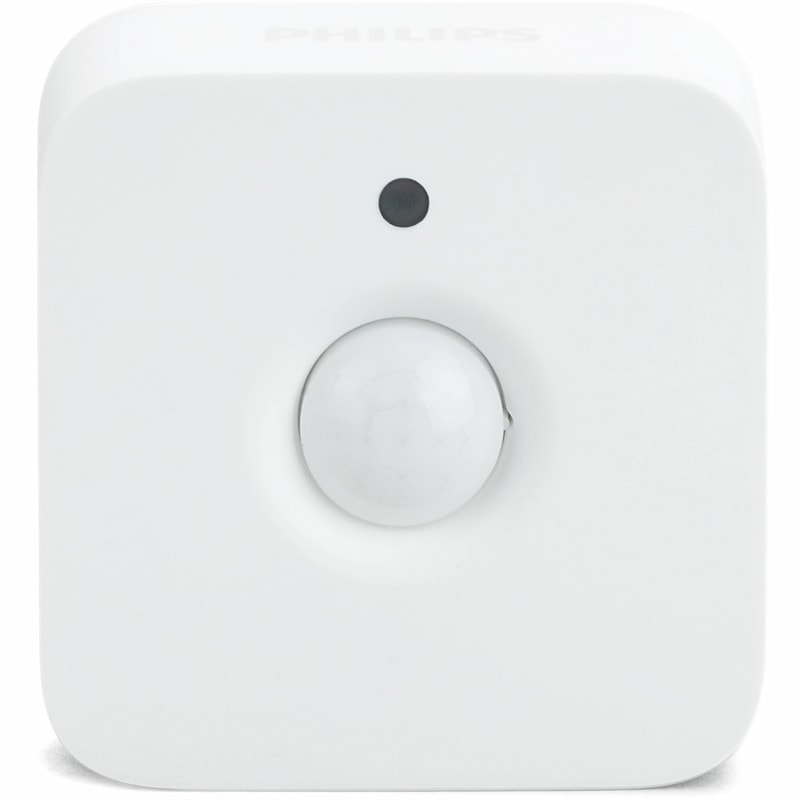
Motion sensors are very convenient if you already have other smart home devices installed. You can place the motion sensor where you need it and connect the sensor to the other device. Usually, you can check the status and control them via your phone app.
Motion Sensor Light
Most home indoor motion sensor light you find on the market is battery operated and stick-anywhere type because it’s easy to install and does not require hardwiring or a wallbox.
There are wired motion sensor lights, but they are not popular because it’s hard to configure the sensor settings on the lights after installation. It’s much easier and more powerful to install a motion sensor light switch to control the lights than a wired motion sensor light. Most of the interior motion sensor lights can be wall mount and ceiling mount according to your needs.
Outdoor motion sensor lights are mainly motion sensor floodlights, security lights and solar lights. They are built with anti-weather materials and are often water resistant and anti-rust.
Motion Sensor Under Cabinet Light
Motion sensor under cabinet lights are mostly rechargeable so customers do not need to worry about wiring or finding an outlet.
The under cabinet lights have a built-in magnet so users can freely stick the light to any iron surface directly. For other non-magnetic surface like wood cabinets or wardrobes, there is usually a steel sheet provided along with the light, so you can stick the iron sheet to the wood surface with tapes first and then stick the light to the steel sheet.
Under cabinet lights are highly favored by homeowners with their cheap price. With the added motion detection feature, everything only becomes easier, especially when the light is installed at dark places, like under stairs, wardrobes and kitchen cupboards.
Motion Sensor Night Light
Motion sensor night light can save you more energy at night. Usually, there are two types of night lights: plug-in type and stick-anywhere type.
The plug-in type night light can be plugged into an outlet directly. The advantage is you don’t need to worry about the battery because some places in your home do not have an available outlet for a night light.
The stick-anywhere type is similar to under cabinet lights, and you can stick the night light to the wall with the tapes provided. They are mostly battery-operated as well.
Motion Sensor Light Bulb
A motion sensor light bulb has a PIR motion sensor embedded at the tip of the light bulb, so you can directly use the light bulb without the need for an additional motion sensor light switch. Generally, a motion sensor light bulb provides automatic controls like auto-on and auto-off like an occupancy sensor does.
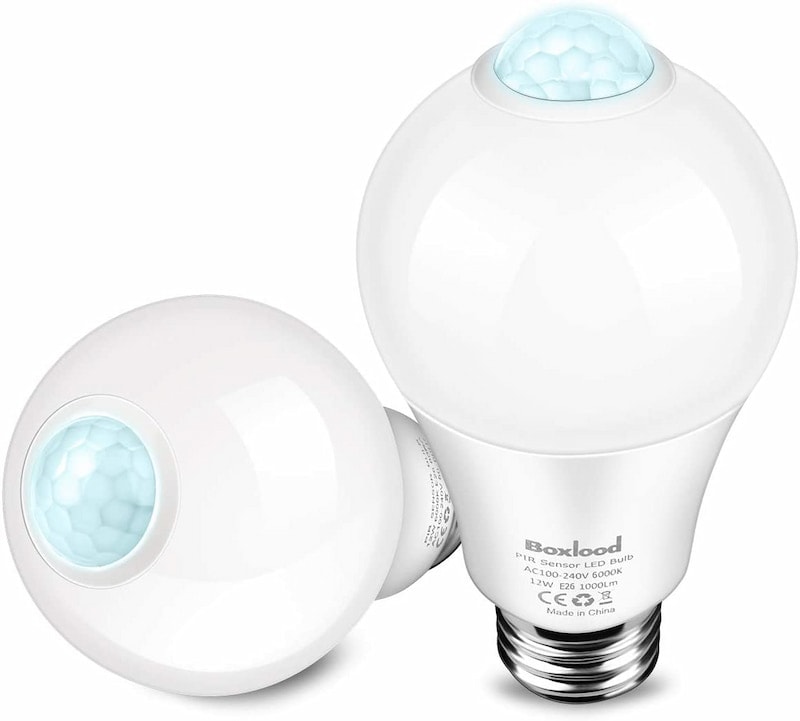
The dusk to dawn feature is like a light sensor that only allows the bulb to activate when it’s dark enough.
Motion Sensor Light Strip
Motion sensor light strips are similar to under cabinet lights. They are more flexible and normally placed under stairs for decoration.
Motion Sensor Floodlight
For maximum durability, motion sensor floodlights are generally made of metal with an IP65 waterproof rating to withstand weather, UV exposure, rusting, and erosion. Motion sensor detecting is a common feature added to floodlights that can help save energy and extend the life of the fixtures. It makes no sense for the floodlight to be on all night, as this wastes electricity and contributes to light pollution. Motion sensor flood lights are commonly utilized as outdoor security lights because of their motion sensing feature.
The security motion sensor light can detect moving individuals, cars, or animals up to 72 feet away at an angle of 180 degrees, providing added security to your property. They can help you find your way home in the dark, as well as deter prospective burglars.
Motion Sensor Solar Light
Motion sensor solar light is powered by solar energy and does not require wiring. It’s a great alternative outdoor security light if you want to save more energy and they can be easily installed anywhere you like.
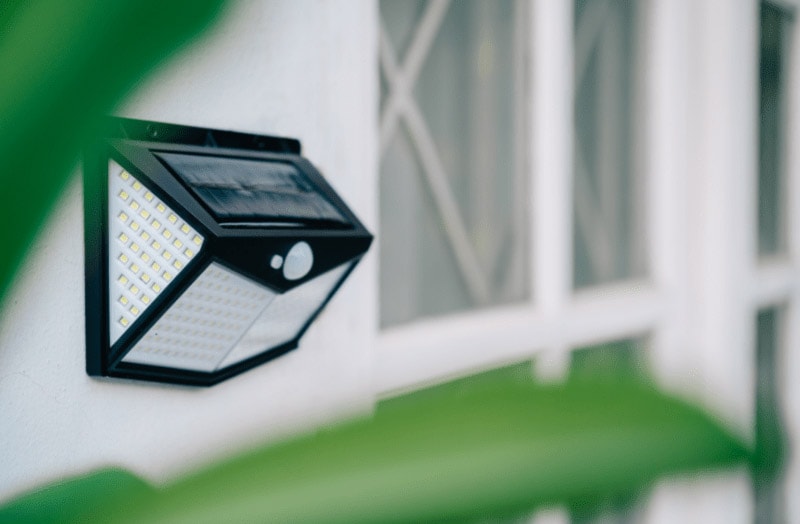
Motion Sensor Light Switch
A motion sensor light switch is usually a wall switch integrated with a motion sensor that controls the light automatically according to whether there are people in the room or not. They are usually called an occupancy sensor or a vacancy sensor for short.
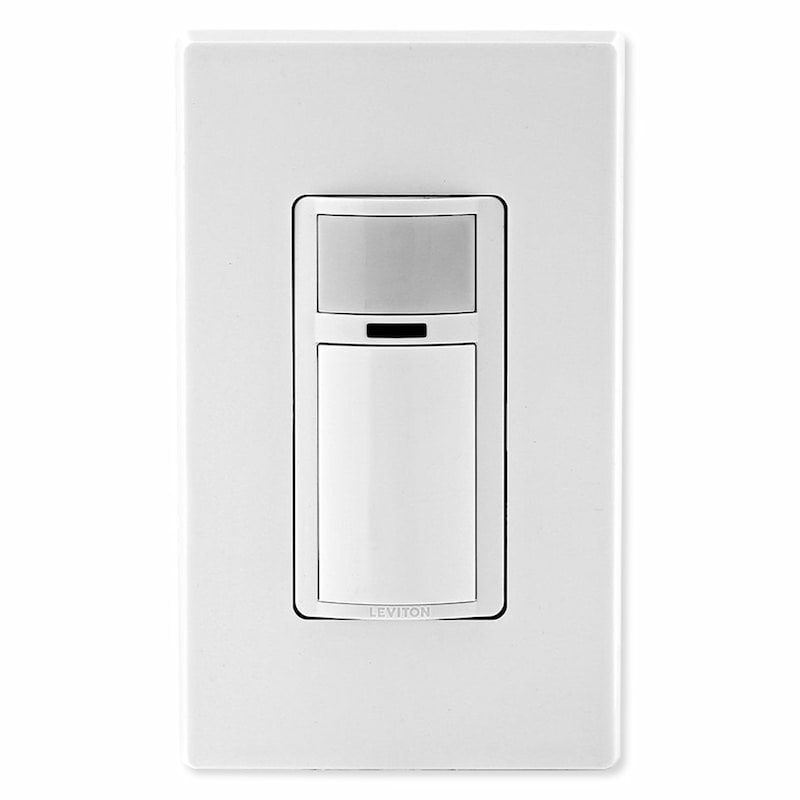
An occupancy sensor is an auto-ON and auto-OFF motion sensor light switch that will automatically turn on the light when there are people in the room and turn off the light when people leave the room.
A vacancy sensor is a manual-ON and auto-OFF motion sensor light switch that requires people to manually turn on the light first by pressing the light switch and automatically turn off the light when people leave the room.
There are motion sensor light switches that are either an occupancy sensor, a vacancy sensor or have both occupancy mode and vacancy mode combined, so users can freely switch modes for max flexibility and functionality.
The wall mount or in-wall motion sensor light switches can be installed directly in the wallbox and replace your regular light switch.
For ceiling mount motion sensors, users need to add a wall switch on the wall to control the light. Ceiling mount motion sensors are usually occupancy sensors because it’s fully automatic and does not need manual control.
How Far Can A Motion Sensor Detect?
PIR motion sensors can detect motions up to 40 feet, and ultrasonic sensors can detect up to 50 feet. Many motion sensors allow you to network and locate them at different locations if you want a broader detection coverage.
Where to Install Motion Sensors?
Motion sensors should be installed where they can have the best coverage of the detecting area and cannot detect motion outside the space.
When placing PIR motion sensors, make sure there are no obstacles blocking the sensor’s view because PIR sensors need to “see” and have a clear view of the detecting space.
PIR sensors should not be installed near heat sources where rapid temperature changes can trigger the sensor by accident.
Try to avoid placing motion sensors near the windows. Both PIR and ultrasonic sensors may get falsely triggered by the heat change or soundwave outside the room. Make sure the motion sensors can only detect motion activities inside the room.

